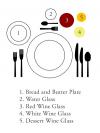

| Visitors Now: | |
| Total Visits: | |
| Total Stories: |

| Story Views | |
| Now: | |
| Last Hour: | |
| Last 24 Hours: | |
| Total: | |
What to Drink in a Polar Vortex
That nice hot cup of tea could actually be making you colder.
Alcohol? It might feel warm going down, but it’s just about the worst thing you can drink on a cold night. And these nights are really, really cold.
The frigid air holding us in its stinging embrace is the ominously-named polar vortex that slipped away from its arctic perch. It’s shown us how woefully unprepared we are for the record cold temperatures we’re experiencing. We’re particularly misinformed when it comes to choosing winter warmup drinks. It seems to defy logic, but a cold beverage can help you hang on to body heat better than a hot one.
When you drink a hot beverage on a cold day, you feel warmer at first because the hot liquid increases blood flow to the skin, but the body’s regulating mechanisms kick in and quickly turn things around. A hot drink tells the nerve receptors in your mouth that things are getting hot in there and it automatically turns on a cooling response. Basically it makes you sweat, which is a welcome response in warm weather when the perspiration carries heat out of your body and into the atmosphere. But right now, the goal is to keep that body heat tucked away in your core.
A cold drink has the opposite effect. There’s some brief chilling while the liquid is going down, but instead of opening up the sweat glands on your skin, the cold causes blood vessels to contract and your surface skin actually tightens up. Less blood flows through the constricted outer layers of skin, which leaves more to circulate through critical core areas. You might get shivery from the surface chill, but that’s not a bad thing; it just means your muscles are trying to balance the cold surface by creating even more core heat.
If constricted blood vessels protect your body’s core temperature, it follows that beverages that can dilate blood vessels are a bad idea in freezing weather, which is what makes alcoholic beverages so dangerous. Drinking increases the blood flow to your skin; that’s why your cheeks are flushed and you have a warm glow inside and out. It’s deceptive though, because all of that peripheral heat comes at the expense of your vital organs. And the body has no need to shiver because the muscles near the surface are warm. If you venture outside, the shallow surface heat dissipates quickly and your core temperature, which is already lower than it should be, will continue to drop. It’s a surprisingly narrow margin between a safe core temperature (the standard 98.6°) and hypothermia (95°), and alcohol gives you a big head start. Just a few boozy minutes spent outside in polar vortex conditions can get you there.
Can a couple of billion subcontinental residents be wrong?
Remember that most of the world drinks hot tea in hot weather, and Alaska leads the nation in per capita ice cream consumption. It’s counterintuitive but true—hot drinks cool you down and cold drinks warm you up.
In the midst of a polar vortex, when you hear the clink of ice cubes in a tall glass, you know you’re about to get toasty.



